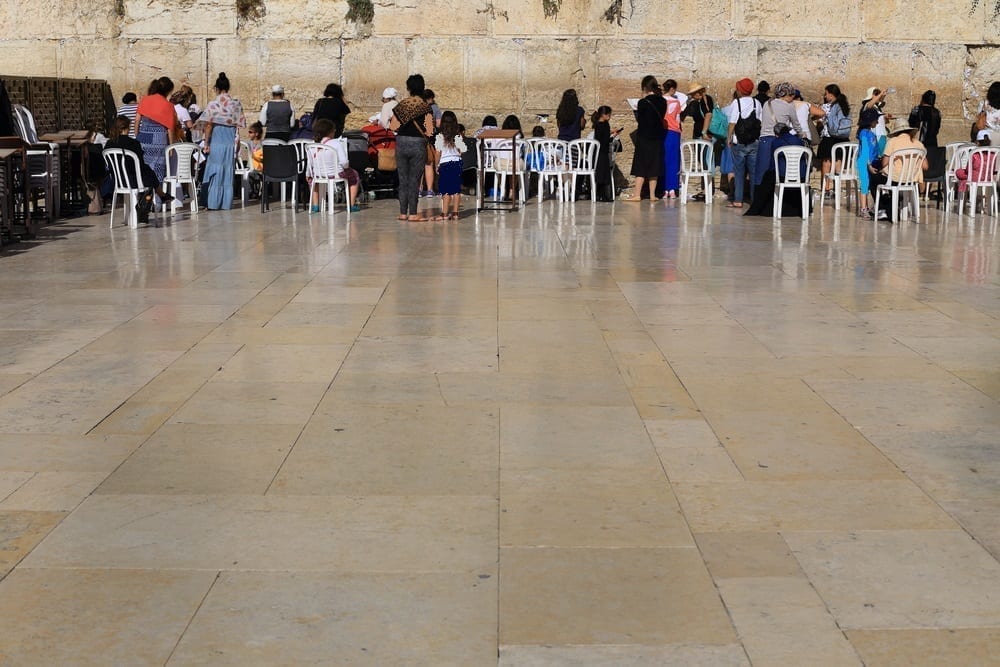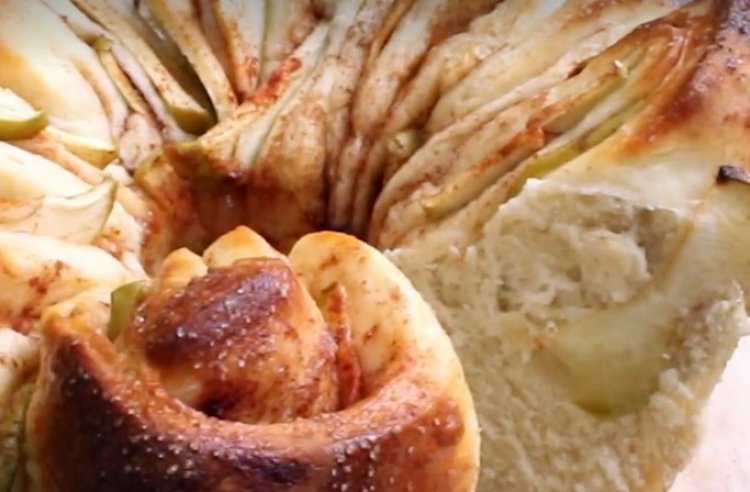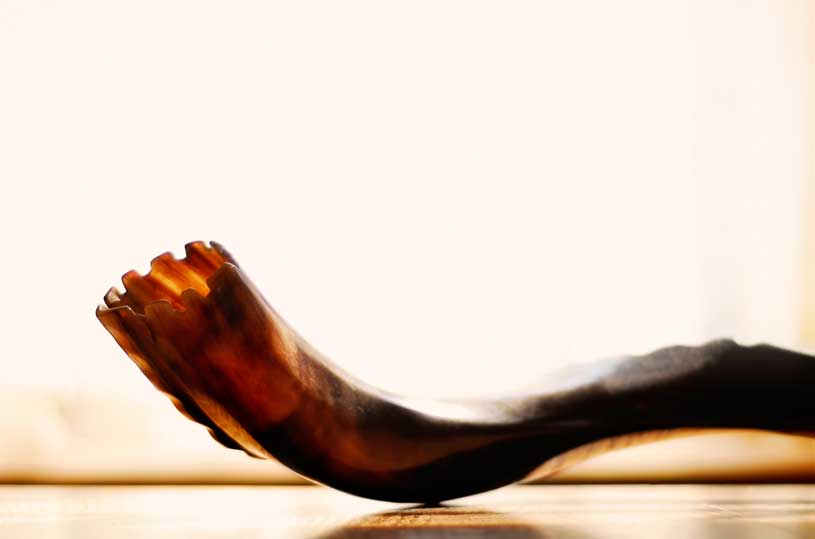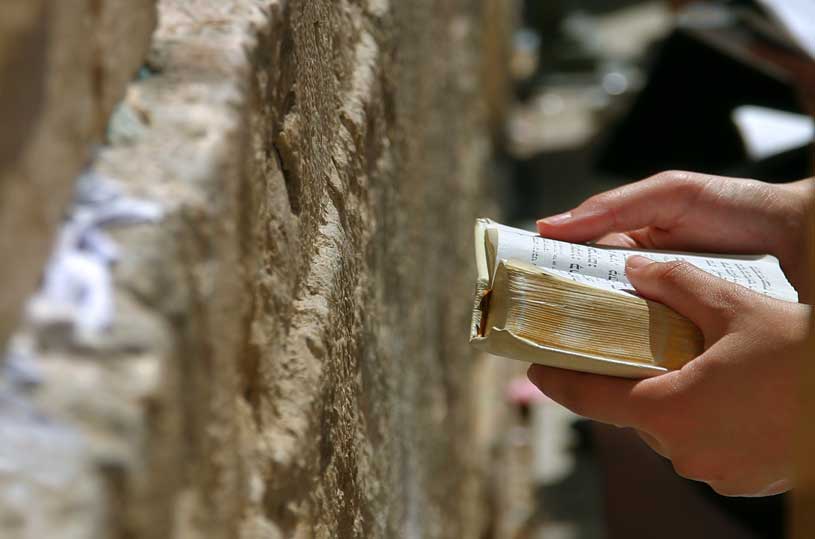On the holy days of Rosh Hashanah, we immerse ourselves primarily in prayer. And as we bury our face in the siddur, it is not uncommon for us to find that our kavanah (concentration) is not what we would like it to be. After all, we’ve been saying these words in the machzor for years and years, and we are compelled to exert special effort if we want to maintain utmost concentration. In the word siddur, we find the root seder, implying that the prayer service has become a routine for us.
So, too, the word machzor means cycle—we’ve been repeating these words year after year. If this is the case, why do we spend so much of our time on the fateful day of Rosh Hashanah immersing ourselves in prayers that seem so repetitious and impersonal? Wouldn’t it be more sensible for us to pour out our hearts to Hashem in intimate, personal conversation on the day that our lives hang in the balance? It’s my judgment day and I want a good year; why busy myself with general tefillot like “V’yeida kol pa’ul ki Atah pe’alto” when my main concern is elsewhere? For 19 years, Chanah prayed for a child. “V’eshpoch et nafshi lifnei Hashem”,she poured out her soul to G-d over and over again, yet it seems that no one understood her pain,not Peninah, not Eli Hakohen, not even her husband, Elkanah.
He said to her, “Chanah, why do you cry? Why don’t you come eat with us? Lama yera levaveich?” He accused her of having a bad heart! Couldn’t he understand the pain of a barren woman? When Eli asked Chanah to identify herself, she said, “Ishah k’shat ruach anochi,” which the Midrash explains as “I am a woman who walks against the wind.” Chanah told Eli, “Everything is so hard for me. I feel that everyone is walking in one direction, and I’m always fighting the current. Nobody is on my side.”Why did Elkanah speak so harshly to his wife? Why did he chastise her in a way that made her feel misunderstood? Elkanah was not a wicked man; in fact, he was very wise. His message to Chanah was “This is not the way to daven. You are bitter, but tefillah is sweet. Tefillah is happiness.”
Finally, after 19 years, Chanah said, “Elkanah, you are right. Up until now, I’ve prayed out of anger. Now I will pray with happiness.” The pasuk tells us, “Ufaneha lo hayu la od,” Chanah’s face suddenly changed; her expression lightened. After 19 long years she finally davened with joy, and her prayers were answered. In Parshat Ki Tavo, we are told that all of the curses fell upon our nation “tachat asher lo avad’ta et Hashem b’simchah uvetuv leivav,” because we didn’t serve Hashem with happiness and a joyous heart.
But how is it possible to summon joy in our hearts when our lives are so hard, when our situation is so bitter? Chazal give us the answer. They teach, “Eizehu avodah shebalev? Zu tefillah.” Make sure to do the ultimate avodah, tefillah, with happiness. And because this is often an arduous task, they compiled the siddur for us. In their brilliance, our chachamim realized that it wouldn’t always be possible for us to fulfill the obligation of praying with simchah.
By instating a system of prayer that balances a positive approach with our heartfelt requests, our Sages ensured that our tefillot would be answered. Because Chanah didn’t follow a system when she prayed, she ended up using words that ultimately backfired. So desperate was she to bear a child that she promised Hashem she would give the child to Him all the days of his life. Because a Levi was only able to perform the services in the Mishkan for 50 years and Chanah brought Shmuel to the Mishkan at the end of his second year (she nursed him until then), he only merited to live until the age of 52. Because the day of judgment is so important and we want to be sure that our words don’t interfere with what we ultimately want for ourselves, our families, and klal Yisrael, there is no better nusach than that which we find in our worn machzorim.
The tefillot that our chachamim composed follow a brilliant pattern, filling us with the positive feeling we desperately need as we stand before Hashem on this day. The entire nusach of the Rosh Hashanah tefillot is based on the prayer Chanah recited when she had her change of heart. In the Shemoneh Esrei of Mussaf, we say nine brachot, which correspond to the nine times she mentioned Hashem’s Name in her prayer. Because she learned to daven with an expression of light rather than one of bitterness, she serves as our role model for tefillah on this exalted day.
Only a tefillah that is recited from a siddur or machzor contains the right amounts of happiness and sadness, joy and solemnity. Every tefillah composed by the chachamim is comprised of two-thirds happiness and one-third pain. In the exalted prayer of Shemoneh Esrei, we first begin with shevach (praise), then bakashah (our requests) and then again hodayah (gratitude); we begin and end on a positive note, with our pain in the middle. If we didn’t have this system, our focus would be on what we lack-and a bitter tefillah is very dangerous. The Bnei Yissachar says that even tekiat shofar follows the same pattern, with twothirds happiness and one-third pain.
We start off with the tekiah, which is a flat sound, our way of thanking Hashem for the routine in our lives. We then move on to the broken sound of teruah, whose root is “ra,” bad; this alludes to our shattered hearts on Rosh Hashanah. And then we conclude with the tekiah again, thanking Hashem and telling Him that we believe we will imminently hear the shofar shel Moshiach.
The Midrash tells us that the word “ori” in L’David Hashem Ori refers to Rosh Hashanah, because we are meant to daven with a face full of light on this day of judgment. Kol hako’eis al Rosh Hashanah siman ra l’kol hashanah. We are meant to be full of light, to remain positive, to keep the perfect balance throughout our prayers if we want them to be fulfilled. As long as we serve Hashem b’tuv leiv u’meirav kol, with a focus on the positive, our relationship will be a positive one and it will bear much fruit in the coming year.





